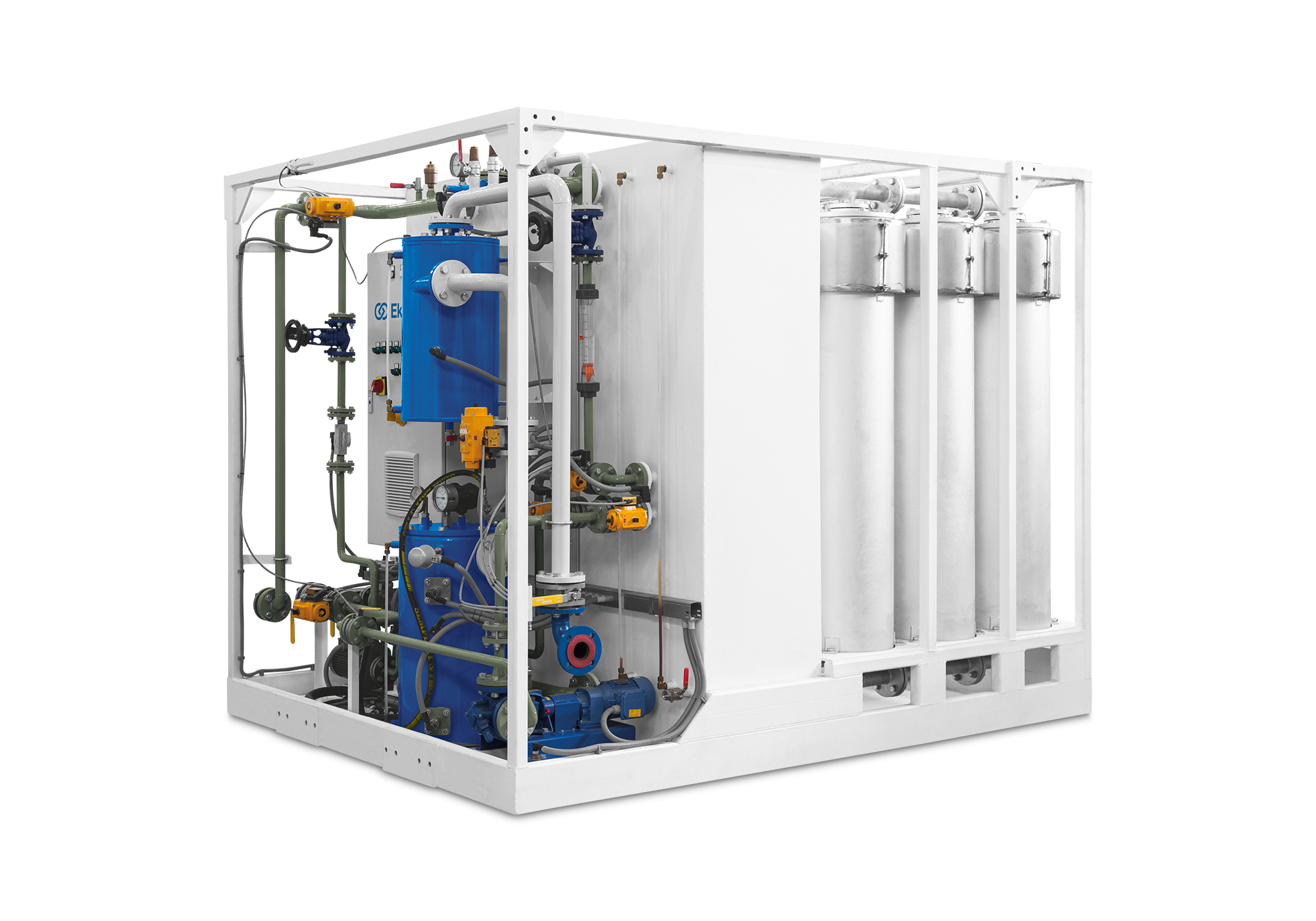REOIL M
Transformer Oil regeneration module
Transformer oil regeneration module REOIL M enables complete renewal of used and old transformer oil onsite fulfilling the requirement of IEC 60422 standard as well as corrosive sulfur removal. REOIL M equipment is designed as an add on module to work together with our transformer oil treatment FILOIL plants. Its function is to extend the capabilities of our exiting FILOIL line enabling the FILOIL plants to fully regenerate used transformer oil.
- Unique reactivation technology
- Automated operation on online and offline transformers
- Automatic removal of corrosive sulfur from transformer oils
- Works on all types of mineral transformer oils
-
REOIL transformer oil regeneration module
Most power equipment is using transformer oil for its dielectric properties for cooling, insulating, and protecting the active parts. Transformer oils are highly refined oils that consist mainly of a mixture of hydrocarbons. Over time, oxidation by products start to form in the oil. Increases in oxidation by products result in the increase of acidity (neutralization number) and decrease the interfacial tension of the oil. At this stage, sludge starts to form, and oil is losing its dielectric properties because it is getting old. To prevent further deterioration of oil and possible damage to the active part of the transformer, oil needs to be regenerated. Oil regeneration equipment regenerates oil in steps.
At the inlet of the equipment, oil is filtered through a coarse filter to prevent any particles from entering the equipment. It is then heated to the desired temperature to elevate the regeneration effect. After the oil has been heated, it enters the back section of the equipment. Oil is pumped through the back section which houses columns with sorbent media. It is in this section where the oil is stripped of impurities and ageing by products.
Oil is then pumped through a vacuum breaking valve into the degassing section where it is dehydrated and degassed. Treated oil is then pumped back to the transformer by the outlet pump. After a given period, sorbent in the back section of the equipment achieves full saturation and is no longer able to regenerate oil. At this stage, the sorbent needs to be reactivated (restored to its original state) to be able to regenerate oil again. Reactivation stage starts by draining the columns in the back section of saturated oil. After the oil has been drained, a vacuum is created and maintained throughout the whole reactivation process in the back section. Then by selective use of heating elements on the top parts of individual columns, the reactivation process is initiated. During the process, the impurities are removed from the sorbent which restores it to its original state. This entire process can be repeated many times until the sorbent starts to lose its properties and needs to be replaced.
-
Technical characteristics of oil regeneration equipment
Oil regeneration equipment is sophisticated. Its inlet pump is a positive displacement rotary pump. The outlet pump is a centrifugal closed coupled high suction pump. For degassing the rotary vane, a vacuum pump and vacuum booster roots pump are used. For the reactivation phase, a rotary piston roots pump is used. All valves across the equipment are automatic ball valves, which are pneumatically controlled. Equipment is fully automatic, controlled by PLC logic and interfaced with a SCADA system. Numerous safety features are introduced throughout the unit to ensure the safety of the equipment as well as the operating personal. Aeration valves, overheating protection, and automatic level switches guarantee the safety of the equipment as well as its ability to identify a possible risk and to power down to prevent any accidents.
-
Performance values of oil regeneration equipment
The level of contamination differs from transformer to transformer. The ageing process, as well as the utilization of a transformer, make it difficult to determine when and how will oil age to the point that it loses its dielectric properties. Regardless of the level of contamination, oil regeneration always delivers the result required by the IEC 60422 standard for mineral insulating oils in electrical equipment. However, our REOIL regeneration technology goes one step further and significantly improves on the values required by the IEC 60422 standard, with the returning oil having properties almost identical to those put into the transformer for the first time.
REOIL transformer oil regeneration equipment is inherently designed to remove corrosive sulfur compounds from transformer oils. Sulfur, as well as elemental (free) sulfur (classified as S8), is removed so that treated transformer oil meets the IEC 62697-1 (DBDS) and IEC 62535 standards. Due to the highly efficient sorbent used inside the REOIL M equipment all reactive sulfur compounds are removed completely from the oil after treatment. Due to the careful monitoring and fine-grained control of the reactivation process, the equipment ensures that there is no introduction of any elemental (free) sulfur (classified as S8) into to the residual oil after treatment.
-
If you are interested to download the technical datasheet for this product, please contact our office directly.
Should you have any more technical questions about our equipment do not hesitate to contact us.

